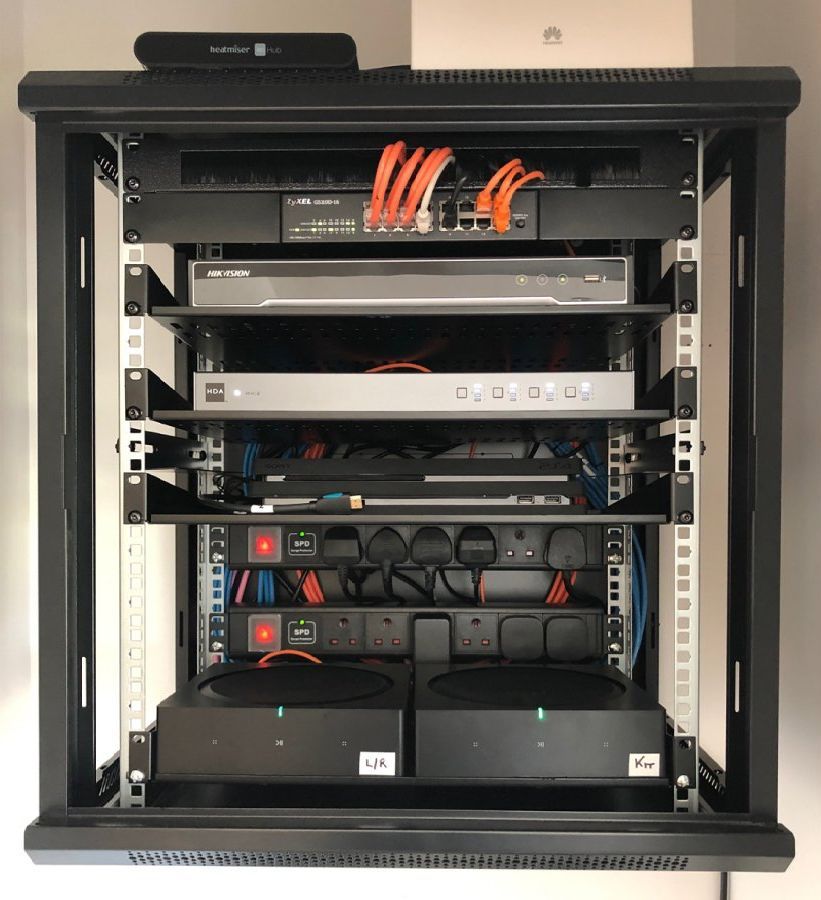Home Network Installation
How it works
Wired and Wireless Networking
A home network is a group of devices that are connected together to share resources such as internet, video, printers, and files. A typical home network consists of ethernet cabling, modem, router, and a variety of wired and wireless devices.
Smart TV's and connected devices like Sky Q, Apple TV and Games consoles are hardwired to the system ethernet hub freeing up the wi-fi for tablets, laptops and mobile devices. Access points can be installed in problematic areas.
Components of a Home Network
When setting up a home network, it is important to understand the various components that make up the network. These components include:
- Ethernet Cable: A twisted pair cable usually run from a central comms cupboard in star configuration to the required locations.
- Modem: A modem is a device that connects your home network to the internet. It receives data from your internet service provider (ISP) and converts it into a form that can be used by your network.
- Router: A router is a device that directs traffic between devices on your network and the internet. It assigns IP addresses to devices, manages network security, and also provides wireless connectivity.
- Switch: A switch is a device that allows multiple devices to connect to a network using Ethernet cables. It can be used to connect wired devices, such as desktop computers or game consoles.
- Wireless Access Point (WAP): A WAP is a device that provides wireless connectivity to devices on your network. It allows devices to connect to the network without the need for cables.
Types of Home Networks
There are several types of home networks, each with its own advantages and disadvantages. The most common types of home networks include:
- Wired Network: A wired network uses Ethernet cables to connect devices to the network. It provides a fast and reliable connection, but can be difficult to set up and may require drilling holes in walls.
- Wireless Network: A wireless network uses radio waves to connect devices to the network. It is easy to set up and provides mobility, but can be slower and less reliable than a wired network.
- Hybrid Network: A hybrid network combines wired and wireless connections to provide the best of both worlds. It can be more complex to set up, but provides the flexibility of wireless connectivity with the speed and reliability of a wired network.
Additional info
The cabling and repair to any access openings is usually completed in one full working day.
Home Network
Thank you for contacting us.
We will get back to you as soon as possible, if it's the weekend it will be Monday morning.
Please try again later

